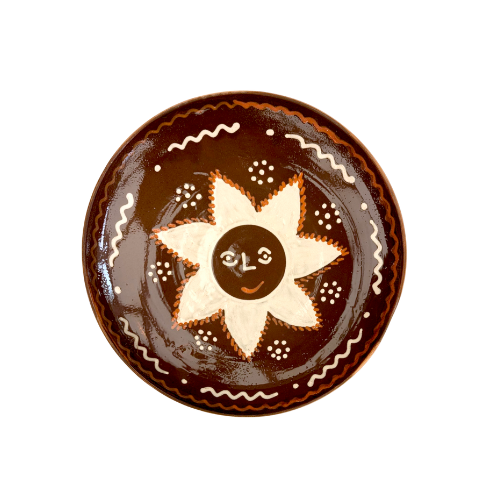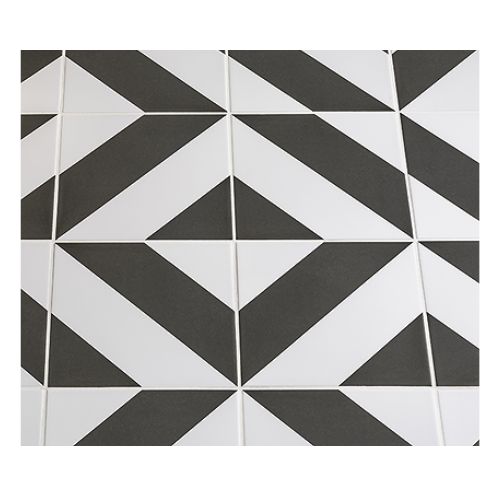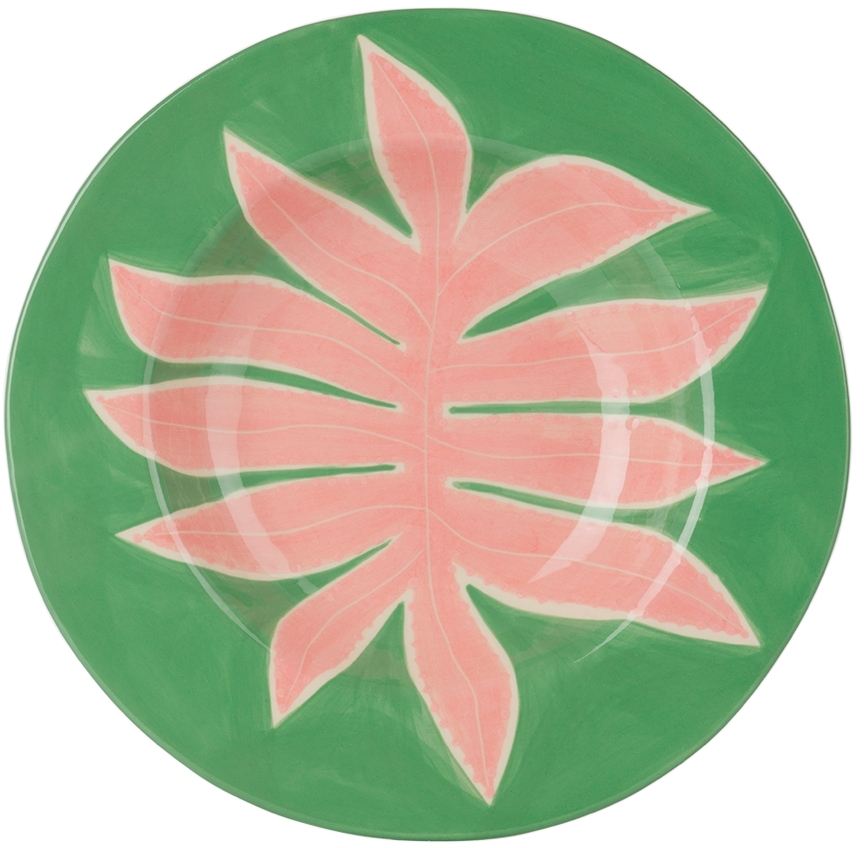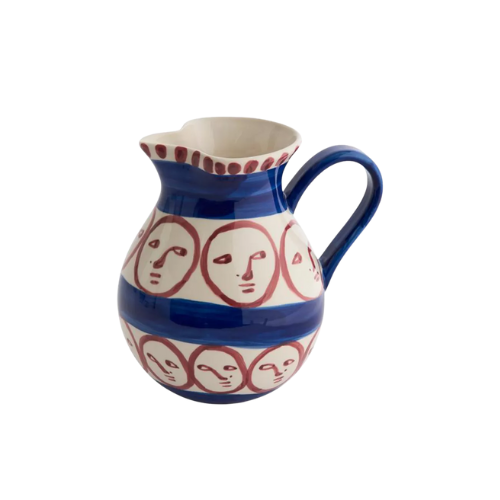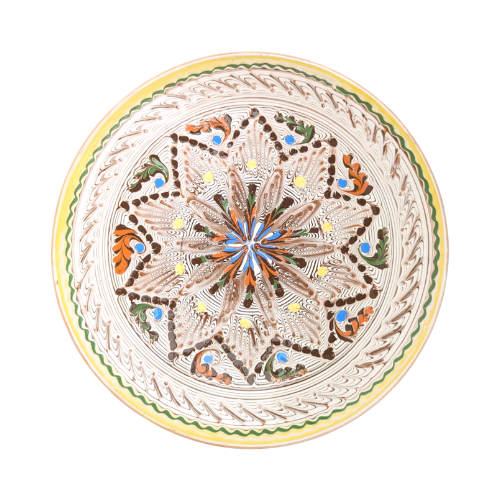Well, That's Something New — This Designer Put the Homeowner's 100+ Piece Ceramic Collection Across the Ceiling of Their Tiny Apartment's Kitchen
In this Brussels apartment, Eastern European influence is seamlessly interwoven throughout the Belgian setting, and one area stands out the most
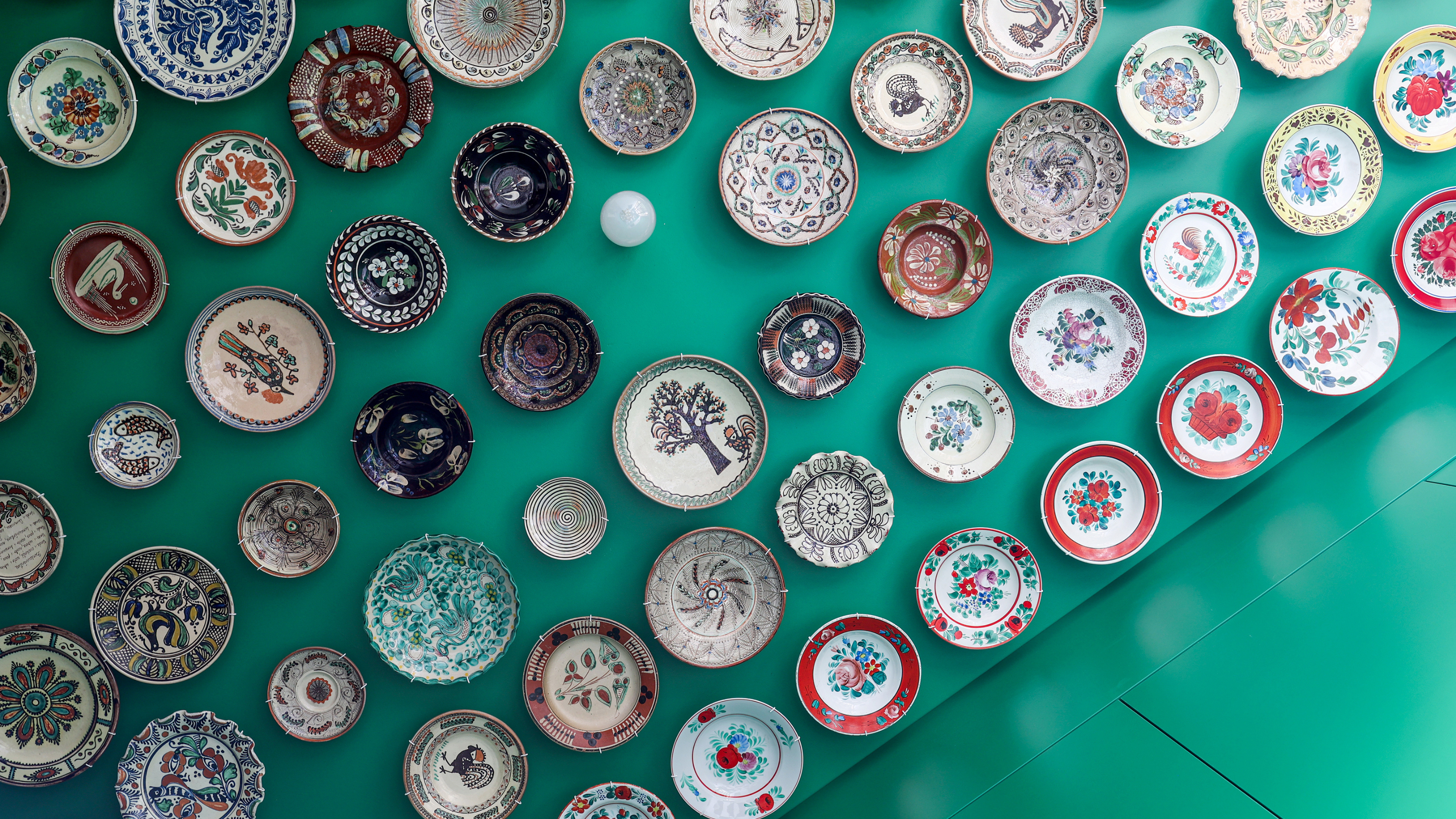
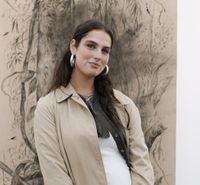
What do you do when you have an awe-inspiring pottery collection and nowhere to display it? Put it on the ceiling, of course.
Okay, fine, it may not be the most obvious solution, but that's precisely what makes this modern kitchen idea so intriguing. The space feels equal parts kitchen and gallery, with the client's eclectic and characterful art collection taking centre stage, shaping the atmosphere of the room.
It is both a celebration of the client's collection and her cultural heritage, where Romanian folkloric art works in harmony with the traditionally Belgian architecture, an ode to the Romanian-Belgian couple who call this space their home.
It makes sense, then, that Matisse's La Blouse Roumaine series was a significant point of inspiration for Tine Loncin, the designer of this marvelous space. For it is in these paintings that French artist Matisse establishes a style seeped with Eastern European motifs and symbols, inspired by his friend, the Romanian artist Theodor Pallady. The series is considered a true artistic representation of East meets West, much like this kitchen.
The Brief
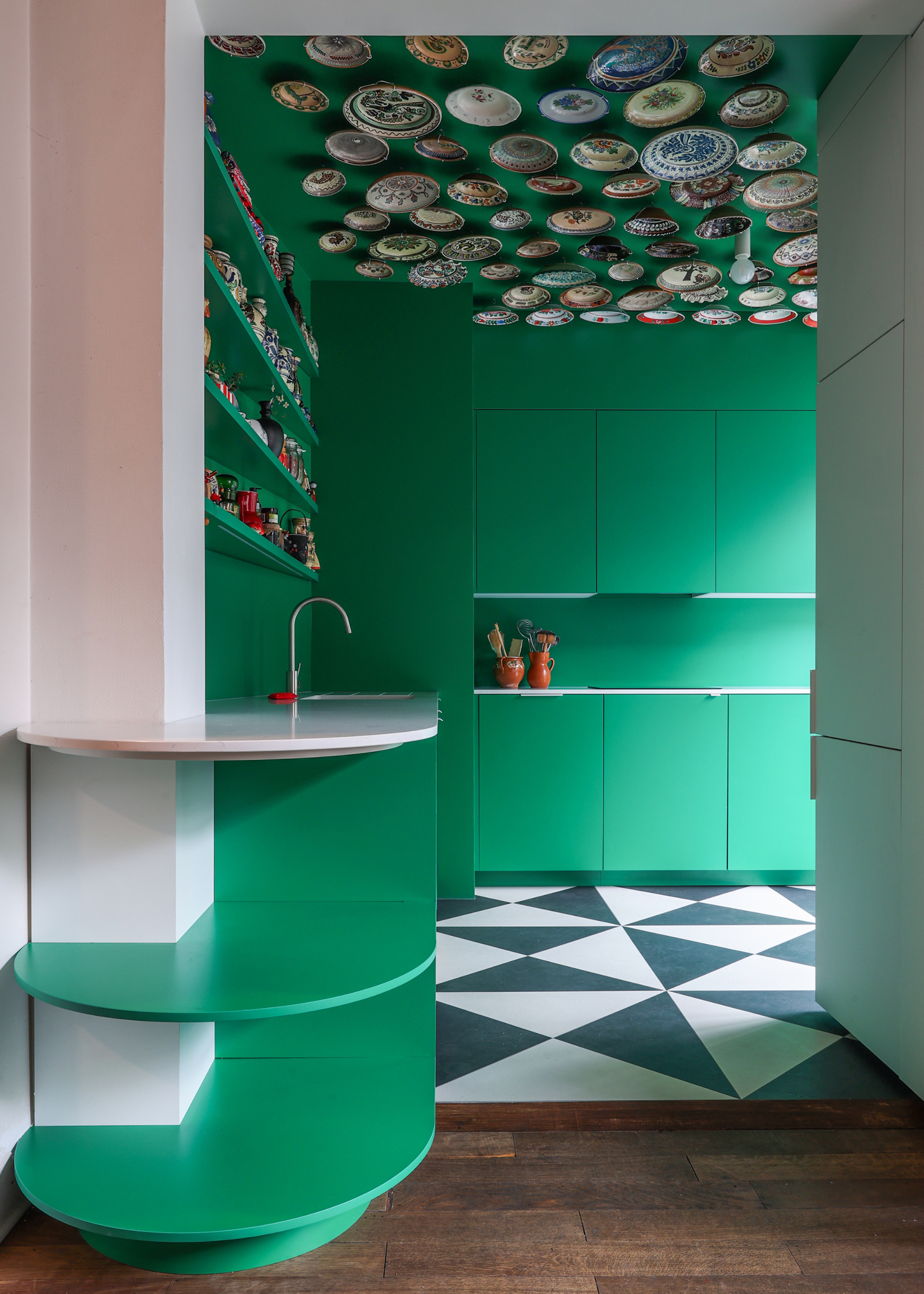
The open plan layout immediately welcomes you into the colorful kitchen.
Tasked with conceptualizing a complete kitchen renovation for this Brussels apartment, interior architect Tine Loncin's most significant challenge was clear from the beginning: transforming a small kitchen into a suitable home for the client's 100-plus pottery collection.
"The client wanted to display her collection of Romanian plates in the kitchen, but also needed ample storage," explains Tine — a tricky thing to pull off in a tiny apartment kitchen. However, with a touch of creative thinking, Tine stumbled upon a solution of her own.
"Rather than choosing between the two, I let the plates take flight. Suspended from the ceiling in a solution that’s practical, personal, and playful," she says.
The Livingetc newsletters are your inside source for what’s shaping interiors now - and what’s next. Discover trend forecasts, smart style ideas, and curated shopping inspiration that brings design to life. Subscribe today and stay ahead of the curve.
This balance of practicality and personality acts as the central crux of the design approach. The expansive art collection was not just a problem to overcome, but a major source of inspiration for the space, a signifier of the client's identity and culture, which would go on to shape the final design.
Tine notes, "My design for the total renovation of the kitchen was conceived to honour and amplify that spirit: a space that feels real, lived-in, and quietly inspiring."
The Inspiration
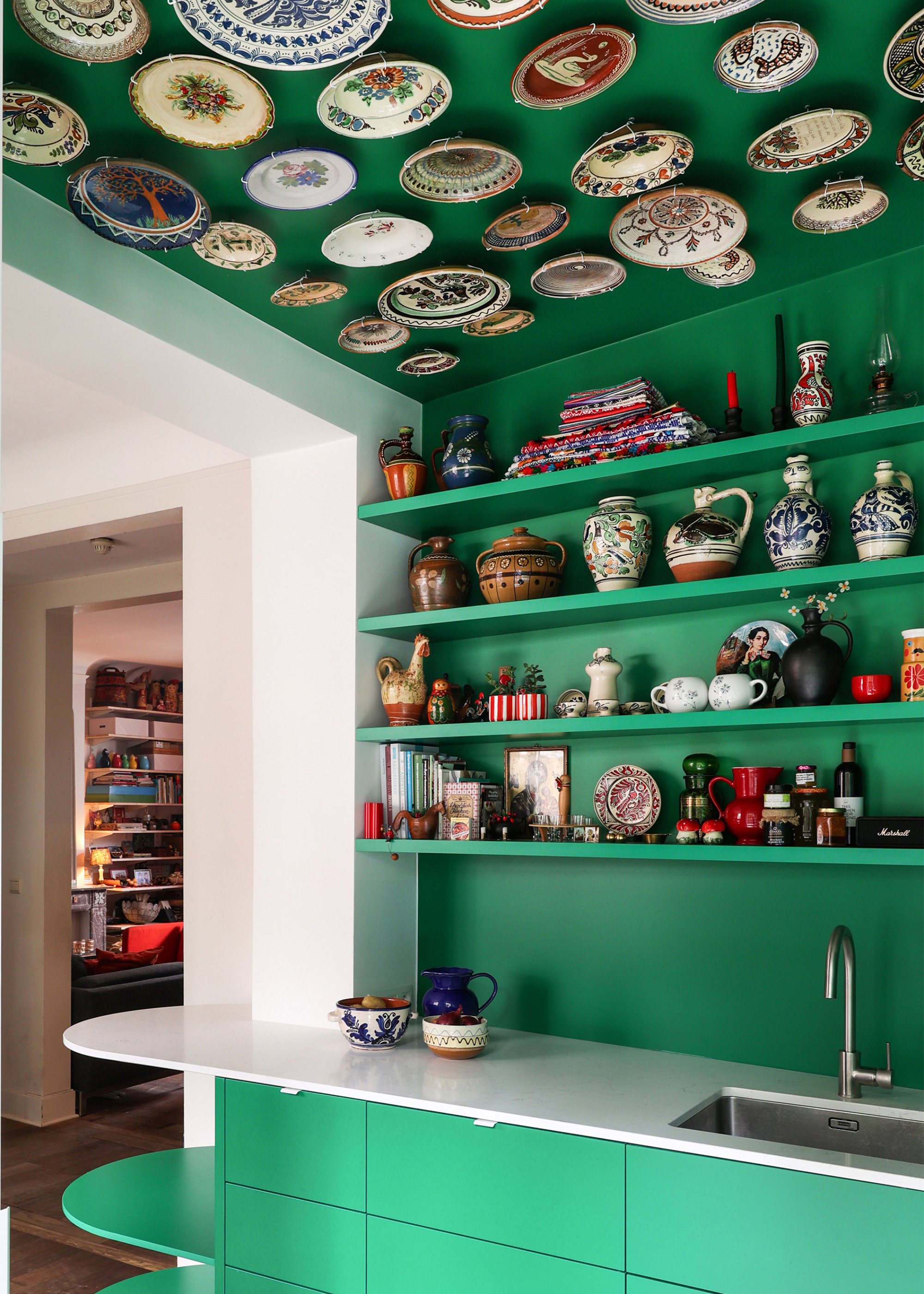
The client's cultural identity was a major point of inspiration for Tine.
As previously mentioned, Matisse's Eastern European-inspired series served as a significant point of inspiration for Tine during the design process, but, perhaps unsurprisingly, Matisse was not the only artist Tine turned to for guidance.
"The work of Romanian artist Constantin Brancusi also guided my thinking. His pursuit of essence, expressed through pure lines and elemental forms, closely aligns with my approach to spatial design," says Tine.
Where Brancusi and Matisse may differ concerning medium, with Brancusi looming large in the world of sculpture, and Matisse being best known for his works of collage, the two share a striking similarity in their approach to form. Dramatic, sweeping lines and softer, gentle curves are characteristic of both of their work, making them a richly varied yet quietly cohesive pair to find inspiration from.
But it was not just their idiosyncratic styles that drew Tine in; these artists also represented something beyond their work; they stood as representatives of their cultures at large. Romanian, meets French, East, meets West. And, as Tine mentions, "The cultural richness of the clients, a Belgian-Romanian couple, served as a key source of inspiration for this design."
While most obviously represented in the dramatic display of traditionally Romanian art, these cultural references are apparent throughout the design.
"Research into traditional Romanian architecture, particularly in Transylvania, revealed a strong use of bold, powerful colors for windows, doors, and roof edges. My initial inspiration collage clearly suggested: This one should be red," Tine says.
The red window frame doesn't just add a pop of color; it draws a visual connection between the architecture and the plates decorating the ceiling, making for a more cohesive feel in the space.
The Design
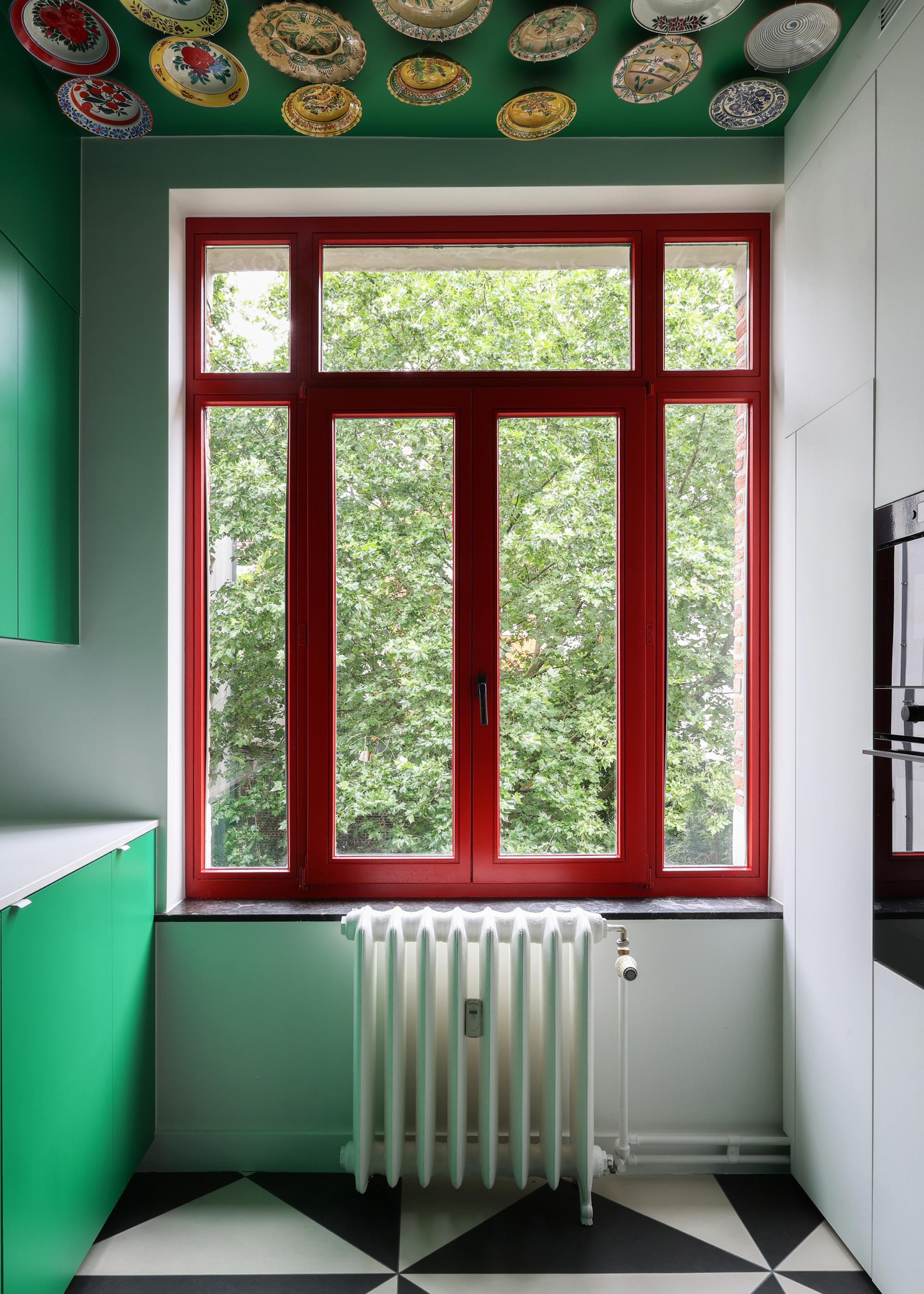
"As an interior architect, I listen closely to my clients; the preparatory phase is crucial for me," says Tine.
So often in spaces with one bold statement, like this ceiling is, the rest of the design tends to be pretty muted, fading to the background. Not in this kitchen.
Here, the eclectic and eye-catching plate-covered ceiling is complemented by an electric green color-drenched room and graphic black and white tiles. Yet, somehow, these contrasting elements, each so bold individually, come together to create a balanced, harmonious design.
For Tine, though, there was no question that these elements would work well together. As she explains, "The green color is indeed bold in itself, but from the very beginning, I knew that such a vibrant shade would be highly appropriate in this setting. In my designs, I never make an intervention without a good reason."
She continues, "Just imagine the same collection of jugs, pitchers, and plates against a white background. All the decorations would be competing for attention, and the whole would feel chaotic. With the strong color, however, the entire collection is framed within one clear context, which brings calm. The background, as it were, absorbs the abundance, allowing the objects to truly take the stage."
For this to work, though, Tine felt an equally bold kitchen flooring was required. "I was very conscious not to pair the dominant bright color with a ‘neutral’ or plain floor. That would have made the space feel flat, without depth. The graphic tiles provide the right counterbalance to the green, adding contrast and dimension," said Tine.
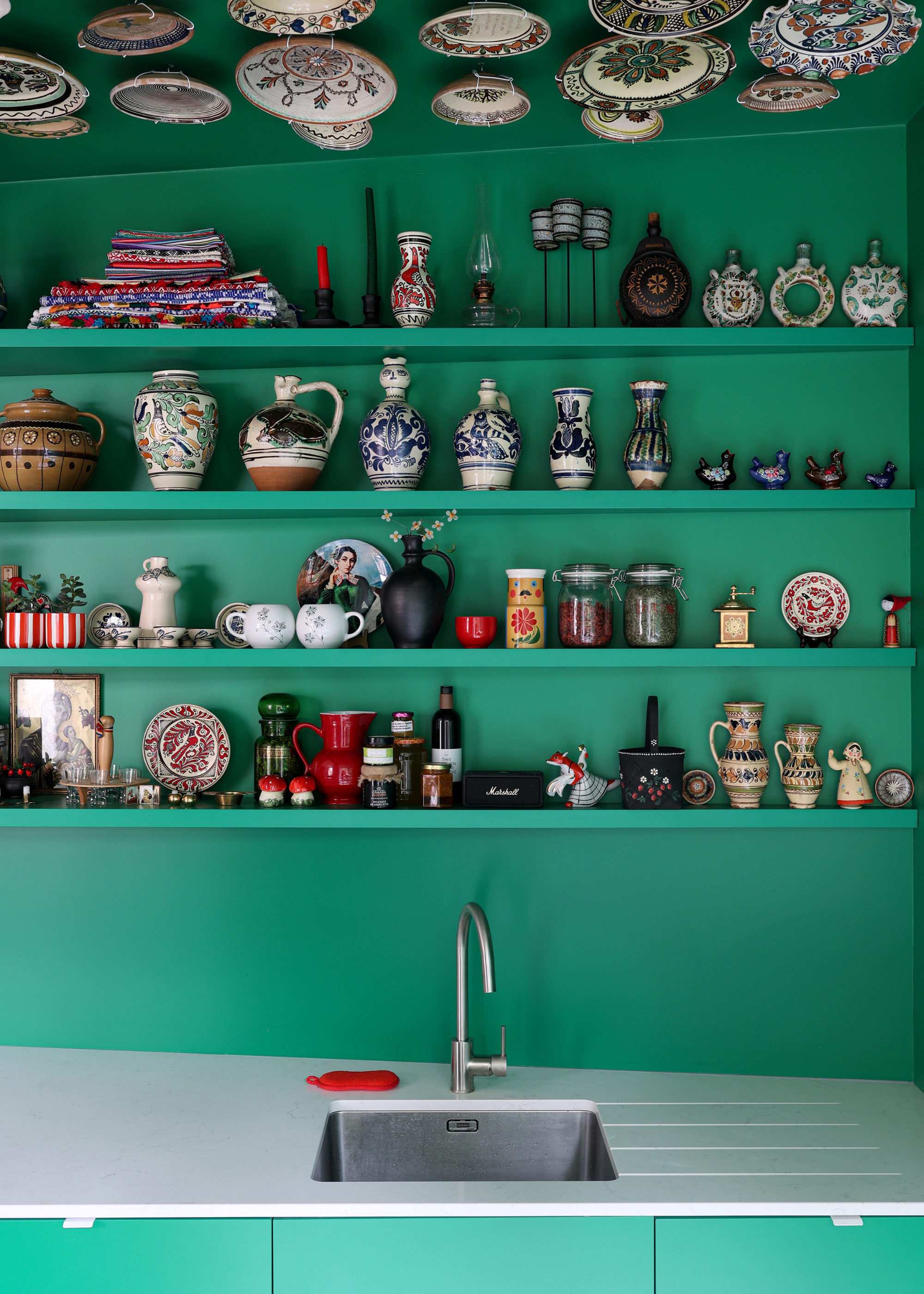
"Matisse creates emotion and dynamism through color. In La Blouse Roumaine, the embroidered patterns on the blouses are set against bold background colors. This inspired me to frame the decorative objects in the kitchen in a clear, expressive way," says Tine.
But it's not all form over function, either. Every material was chosen for its durability and its appealing looks. The real challenge was maintaining the same shade of green across these different materials.
"The cabinets are made of High Pressure Laminate, and I spent a long time searching for a matching backsplash. I found it in façade cladding! When I discovered a beautiful green there, I adjusted the choice of High Pressure Laminate brand accordingly (finding the exact same color). In the end, I was able to perfectly match the corresponding RAL color for the paint," Tine explains.
The counters and flooring offer a sleek, minimalist feel thanks to their smooth, crisp materiality.
"The kitchen countertop material is a composite, a mixture of quartz and small natural stone particles bound with resin. The floor tiles are porcelain, extremely strong, durable, and wear-resistant thanks to their dense composition and high firing temperature," says Tine.
All together, these materials make up a highly striking, yet supremely durable kitchen design.
If eclectic, colorful kitchens like this are right up your street, you'll probably love this expansive home in Coimbatore, India.
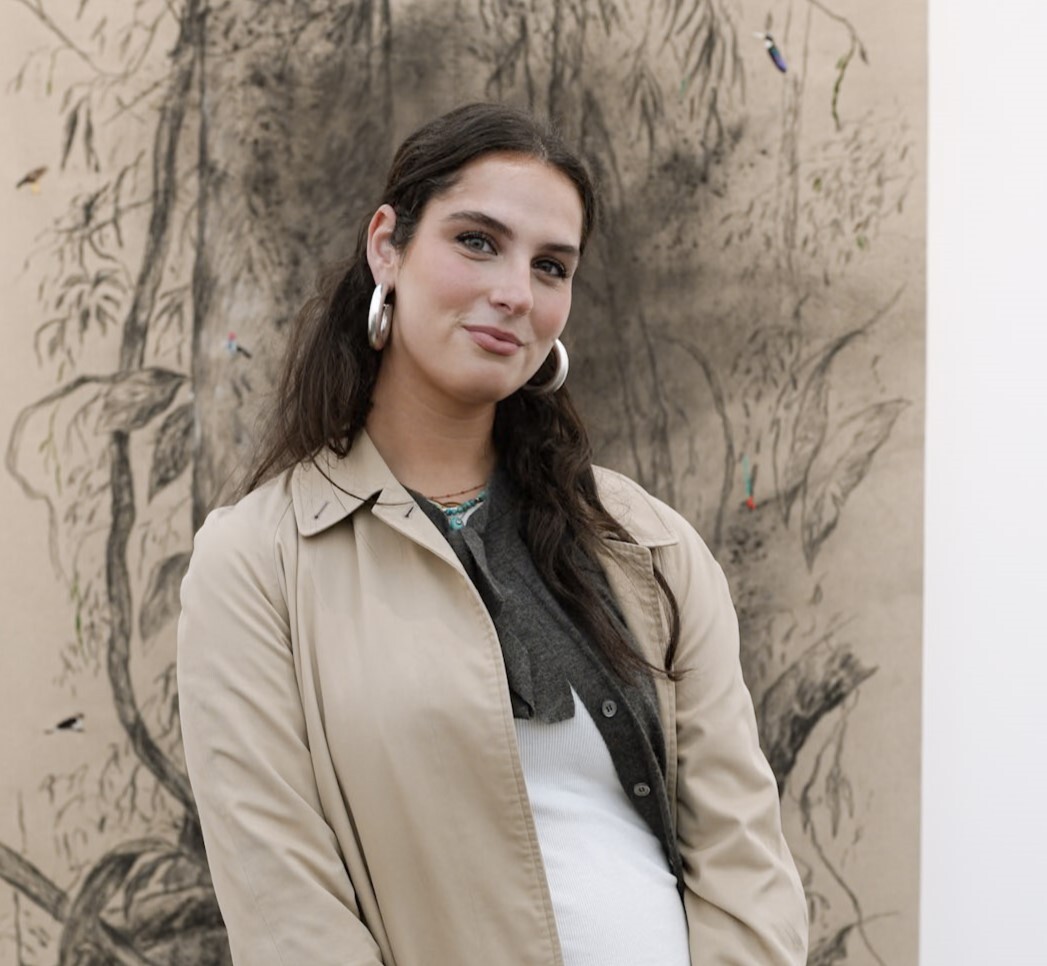
Maya Glantz is a Design Writer at Livingetc, covering all things bathrooms and kitchens. Her background in Art History informed her love of the aesthetic world, and she believes in the importance of finding beauty in the everyday. She recently graduated from City University with a Masters Degree in Magazine Journalism, during which she gained experience writing for various publications, including the Evening Standard. A lover of mid-century style, she can be found endlessly adding to her dream home Pinterest board.

